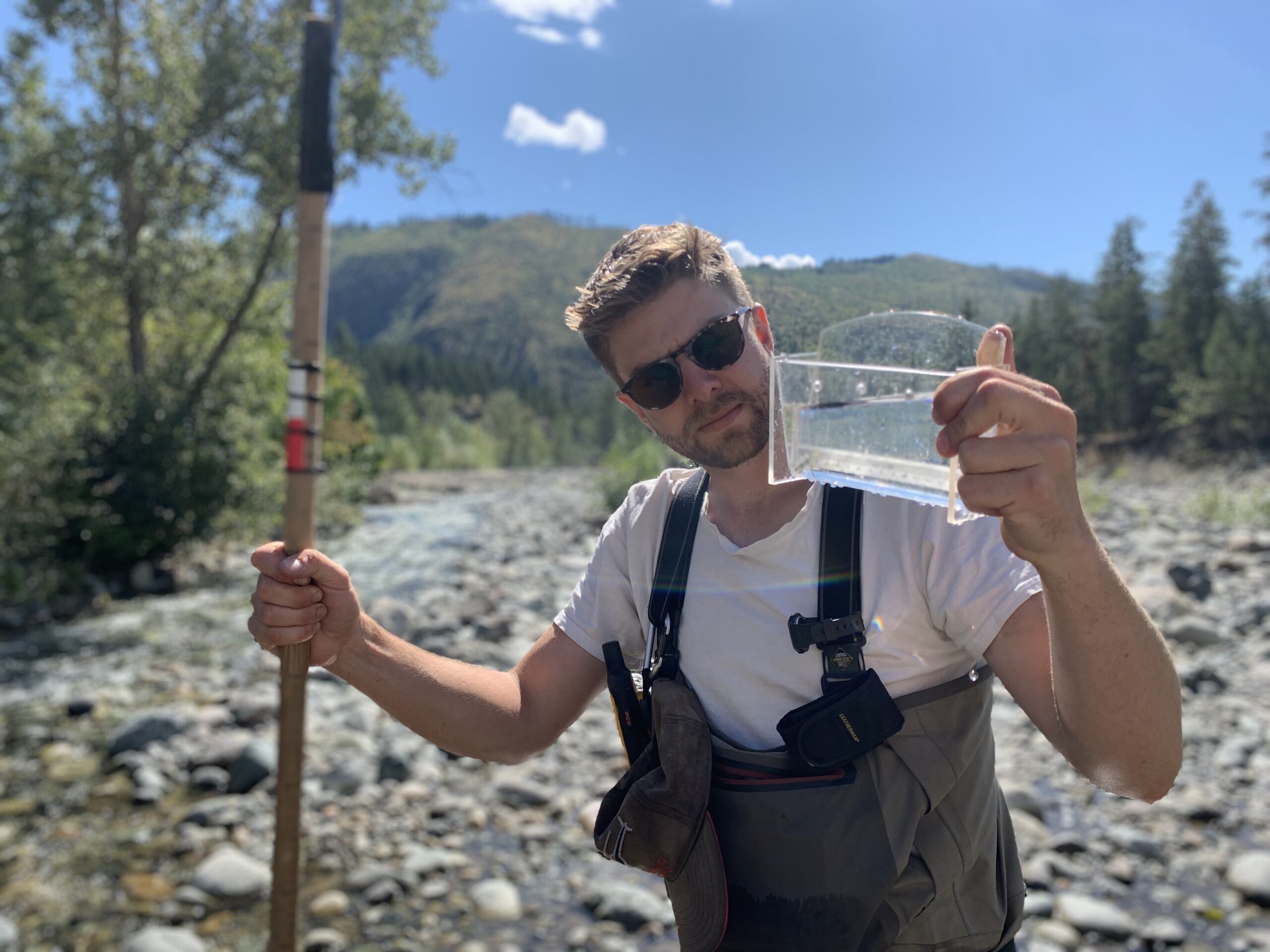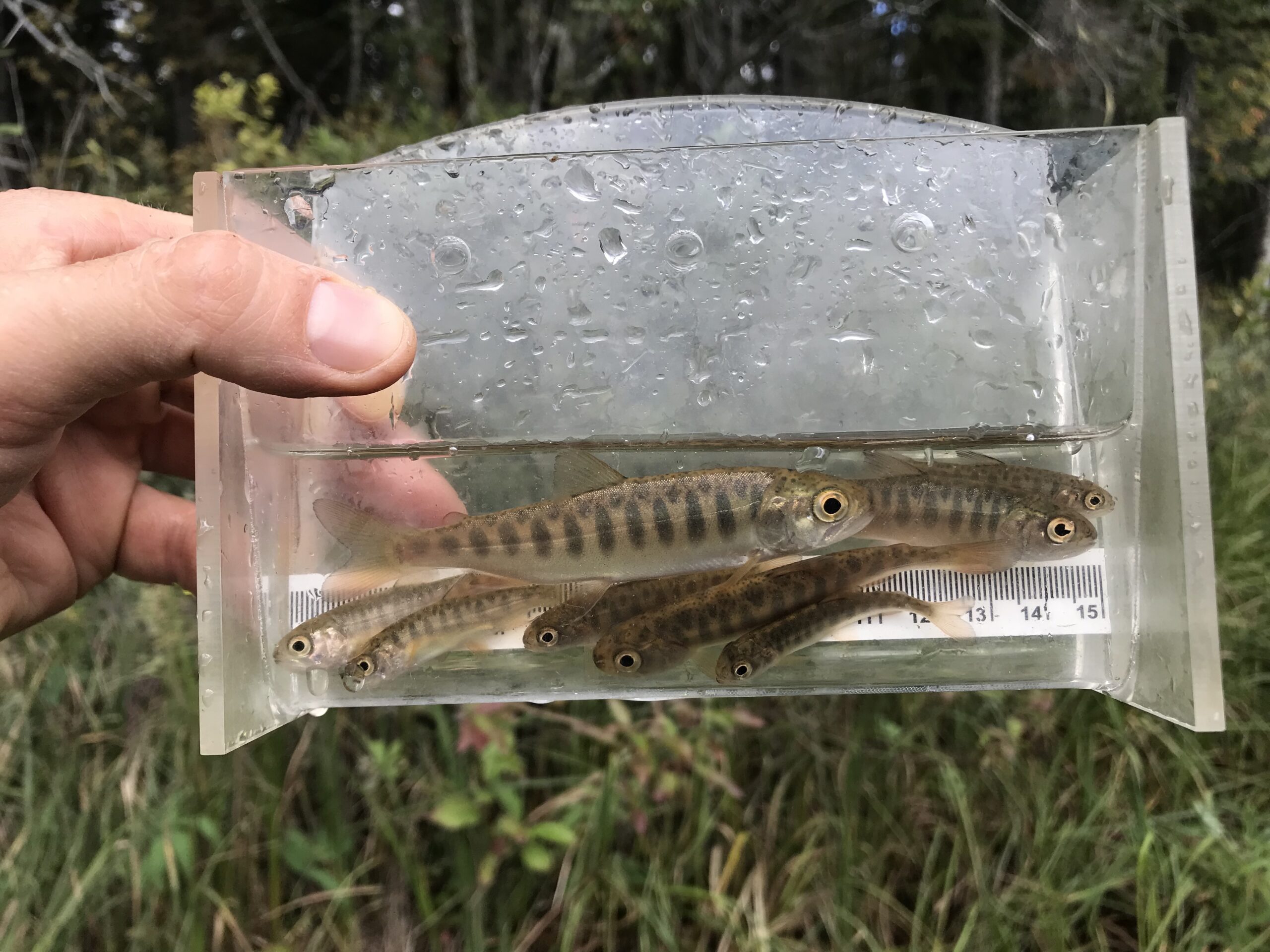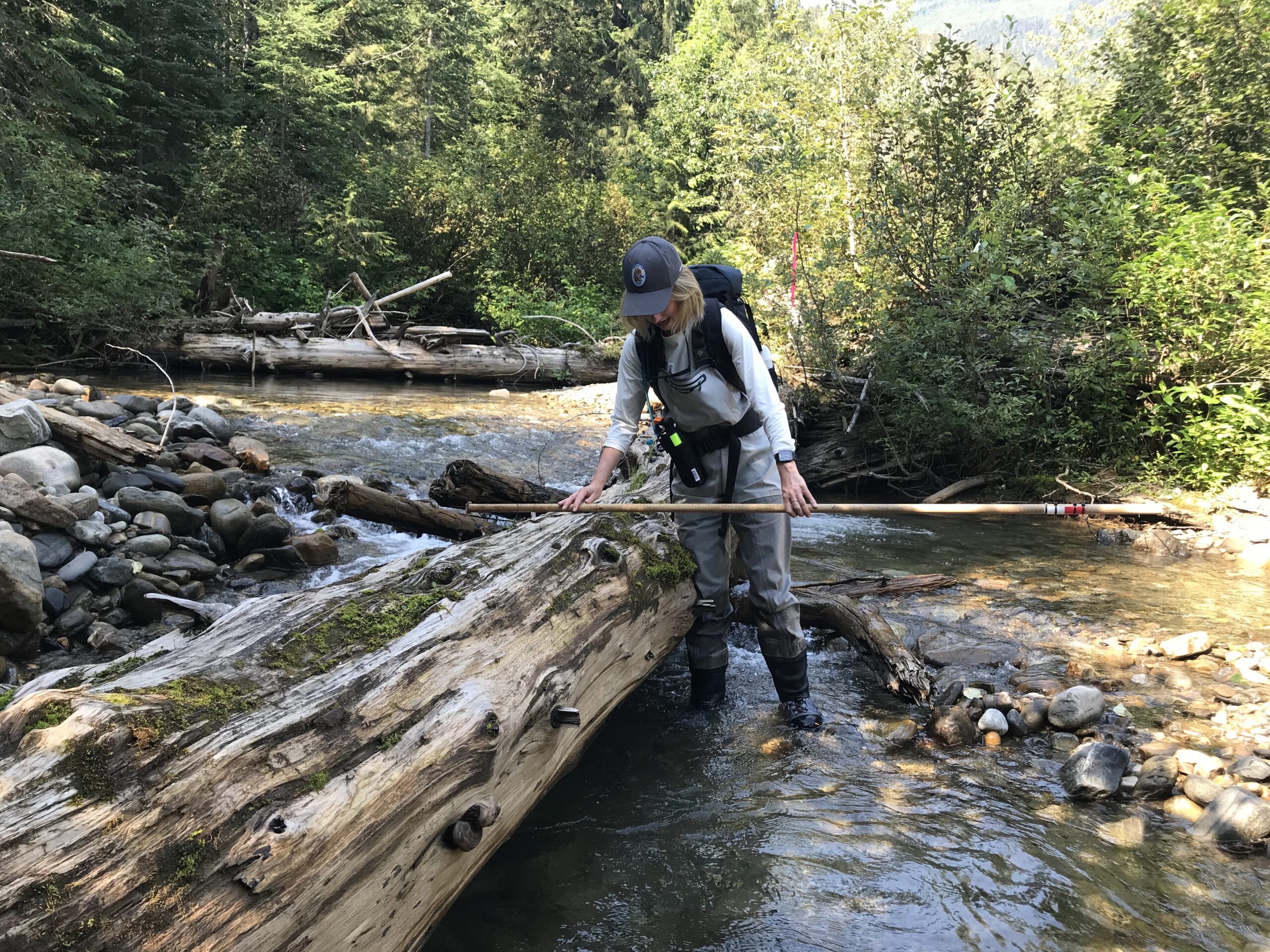
Ontario’s public service heads back to the office, meaning more traffic and emissions
For 15 years and counting, my commute from Mississauga to Toronto has been mired by...
Salmon can’t turn on the air conditioning when it gets too hot. They can’t sweat to cool themselves down. As a cold-blooded species, they’re at the mercy of the water they swim in when it comes to their internal temperature. And things start to get dicey when that water gets too warm.
Globally, fish are feeling the heat from climate change, but in interior B.C. decades of logging in the headwaters of salmon streams has cranked those temperatures even higher, new research shows. As trees are cut down along waterways, small streams are exposed to more direct sunlight, while logging across watersheds can change the way water flows throughout the whole system. The combined effect can leave wild salmon swimming in waters that are warmer than they’d like.
“If you look at the size of the impact of forestry, it can warm waters several degrees, which is a ton actually from a fish perspective,” Jonathan Moore, a biology professor at Simon Fraser University and co-author of the study published Feb. 14, 2023, told The Narwhal.
“The overall implication of this is profound,” he said. “Logging will magnify oncoming climate change.”
The study, conducted as part of lead author Dylan Cunningham’s master’s research, dialed in on streams that feed the North Thompson River in Secwépemc territory between Kamloops and Valemont, B.C. These waters are rearing grounds for juvenile salmon and also support other fish species such as rainbow trout, bull trout and sculpin.

“It’s such a beautiful area,” Cunningham, who is now a biologist for Fisheries and Oceans Canada, told The Narwhal.
The landscape shifts from desert-like grasslands outside of Kamloops, where the researchers would get cacti stuck to their waders, to farmland bordering the “milky blue” North Thompson. Further north, past Blue River, B.C., it’s all old-growth temperate rainforest, where stretches of towering cedars and wild berries can be found, he said.
But here, like elsewhere in the province, the history of logging is etched into the hillsides.
While previous studies have examined the local impacts of logging on waterways, Cunningham’s research took a broader approach, analyzing the links between logging and stream temperature across the watersheds of 22 tributary streams feeding the North Thompson.
The level of logging that took place between 1970 and 2019 varied significantly across the watersheds Cunningham analyzed. He found higher stream temperatures in watersheds where there had been more logging.
The link was even more pronounced when he zeroed in on logging that took place within 50 metres of streams within each study watershed. Tributaries where just five per cent of that sensitive riparian area in the watershed had been logged saw daily temperatures reach a high of 13.5 C on average during the summer, Cunningham and his co-authors found. But in streams where 35 per cent of the riparian area in the watershed had been logged, the daily high jumped to an average 17.2 C.
That increase in temperature is enough to stress young coho — fish that are already threatened in the North Thompson, according to the study. The number of adult coho that make it back to spawn in this river system declined more than 60 per cent over the last three decades, the authors note.
For juvenile coho salmon, the optimal temperature for growing is 12 to 15 C. When temperatures hit 17 C, the young fish start to get stressed. When that happens, they may have to eat more to keep up with a faster metabolism or fall prey to disease more easily, Moore said.
When temperatures hit 20.3 C, the young fish stop growing, the study notes. At 25.9 C, water becomes deadly. “They can have heart attacks and straight up die because their bodies aren’t adapted to those temperatures,” Moore said.
Though water temperatures detected during this study of the North Thompson tributaries weren’t lethal, they were high enough to burden a species already contending with fishing pressures, extensive habitat loss and a warming ocean.
Teresa (Sm’hayetsk) Ryan, a Tsm’syen fisheries scientist with the faculty of forestry at the University of British Columbia who was not involved with the study, said the new research shows the importance of headwater streams to keeping waters downriver cool.
“They shouldn’t even have to say that, it should be obvious in my view,” she said in an interview.
But many of these small streams remain unprotected.
“Forestry is exacerbating the impacts of climate change,” Moore said. It’s pushing these river systems “closer to a place where they can no longer support thriving species that rely on cold water, like salmon.”

Logging can lead to warmer water in different ways. When trees are cut down next to small streams, the shade from the forest canopy disappears and the water is left to warm under the suns rays, Cunningham explained.
Alongside warming resulting from lost canopy cover, forestry can also change the hydrology of an entire watershed.
The watersheds Cunningham’s study focused on are all “snow dominated,” he said. Snow builds up in the fall and winter and when it melts off in the summer, a lot of it is soaked up by the Earth, eventually replenishing the groundwater supply.
When vast stretches of a watershed are logged however, the snow will melt earlier and faster — too fast for the Earth to absorb it all up, Cunningham said. If the groundwater isn’t recharged, there’s less water in reserve to feed the streams during the hottest months when there is already very little rain. As water levels drop, those streams become more vulnerable to air temperatures, he explained.
Warmer waters put salmon at risk, and as the fish decline, everything they feed — including communities and the forest itself — becomes more vulnerable too.
“There’s a reciprocal relationship with salmon and forests. The salmon deliver marine derived nutrients into the forest. And forest provides the habitat for the stream,” Ryan explained. “They’re dependent on each other.”
For First Nations communities, the loss of salmon has a “profound impact,” she said. The decline of this keystone species not only worsens food insecurity for communities that have long depended on salmon for nourishment, but also impacts cultural life, she said.
“We’re having a negative impact on all our watersheds and I think this study highlights that,” she said.
Though the study’s findings are worrying, Moore said they also point to an opportunity to lessen the impacts of climate change through better forestry practices.
“Decisions about how much forestry happens within these salmon bearing watersheds is an obvious management lever,” he said.
Currently, for instance, the B.C. government restricts logging in the rich, riparian zones that flank larger streams and rivers, but there’s much less protection for the small streams that feed these bigger waterways, the study notes.
“These small headwater streams constitute over 70 per cent of a stream network’s channel length, so that’s a huge amount,” Cunningham said. And it’s along these unprotected streams where 90 per cent of the logging in riparian areas took place in his study watersheds.
“Adding protective buffers to these streams would be one policy option to address warming temperatures,” he said.

Ryan agreed protection for these smaller headwater streams is needed but warned that a one size fits all approach to riparian buffers may not cut it. And it’s not just relatively narrow bands of forest flanking rivers that need better protection, she said.
“If I was to go to [Premier David] Eby and ask for my wish list, it would be to stop clear cutting at the top because that is such a destructive practice,” Ryan said. Protecting what remains of old-growth forests would also be up there, she added.
Beyond better protection for riparian areas, Cunningham said managing forestry at a smaller scale could help better control its impacts. Across the 28 watersheds he studied as part of his broader research, he found between one and 59 per cent of watersheds had been logged.
“Fifty-nine per cent — that’s a huge amount of harvesting in one watershed and this is likely the result of forestry being managed at a really large spatial scale,” Cunningham said. Managing at smaller watershed scales “would allow for more control over the distribution of forestry impacts,” he added.
A spokesperson for B.C.’s Ministry of Forests said in a statement to The Narwhal “the ministry is concerned about any actions that would cause an increase in stream temperature, including possible links with the removal of vegetative cover in watersheds.”
The spokesperson noted that riparian management of both small fish-bearing streams and larger streams that don’t carry fish.
“For example, more than half of the coast region has land use objectives that specify management restrictions on small, headwater streams,” the spokesperson noted. And, “many forest stewardship plans across the province reflect this increased level of riparian stewardship.”
Cunningham’s study comes at a time of major upheaval in the forestry sector in B.C. As First Nations, scientists and environmental groups warn of ecological collapse if steps aren’t taken to protect vulnerable forest ecosystems, forestry dependent communities are feeling the pain of job losses after a series of mill closures.
In mid-February the provincial government announced new measures to protect old-growth and incentivize innovation in the forestry sector to support jobs in the industry. Among those measures, the government announced $25 million to support eight new regional forest landscape planning bodies that will see the B.C. government work with Indigenous governments, communities and the forestry sector to develop regional forestry plans that should see greater protection for old-growth forests vital for biodiversity.
Additionally, the province announced another $90 million towards a fund to support jobs in manufacturing, bringing the total fund to $180 million. It could support mill retrofits to handle smaller diametre logs, for instance. Another $10 million was announced to support a shift away from clear-cutting towards more sustainable logging practices such as selective harvesting.

Just a few weeks later, on March 6, the province and the B.C.-First Nations Water Table announced $100 million to support healthy watersheds and launched a public engagement process on an intentions paper outlining plans for a new watershed security strategy to be co-developed through the B.C.-First Nations Water Table.
All activities — including forestry — that affect watershed health must be examined, Cowichan Tribes Chief Lydia Hwitsum, who is also co-chair of the B.C.-First Nations Water Table, said during a press conference.
“When we look at water sustainability going forward, we absolutely have to be looking at the sort of practices that are undertaken in forestry and find those ways forward for that sort of sustainability that’s so critical for us,” she said.
Water, Land and Resource Stewardship Minister Nathan Cullen pointed to a significant change to the Forestry Act announced in mid-February that means timber will no longer be prioritized over the health of water and biodiversity.
“That’s a very encouraging thing that we’re seeing and supported by forestry companies that also understand if practices don’t leave behind a sustainable environment, there’s not a future for them either as forestry companies,” he said during Monday’s press conference.
“With that change to regulations and the forest landscape planning process, we can better determine how to manage small streams as part of the forest ecosystem,” the spokesperson for the Ministry of Forests said in a statement.
Updated on March 8, 2023 at 8:42 p.m. PT: This story has been updated to include comments from the B.C. Ministry of Forests.
Enbridge Gas will face Waterloo Region in a hearing before the Ontario Energy Board to renew an agreement that would allow the company to continue...
Continue reading
For 15 years and counting, my commute from Mississauga to Toronto has been mired by...

For our last weekly newsletter of the year, we wanted to share some highlights from...

The fossil fuel giant says its agreement to build pipelines without paying for the right...